Columnar English Oak
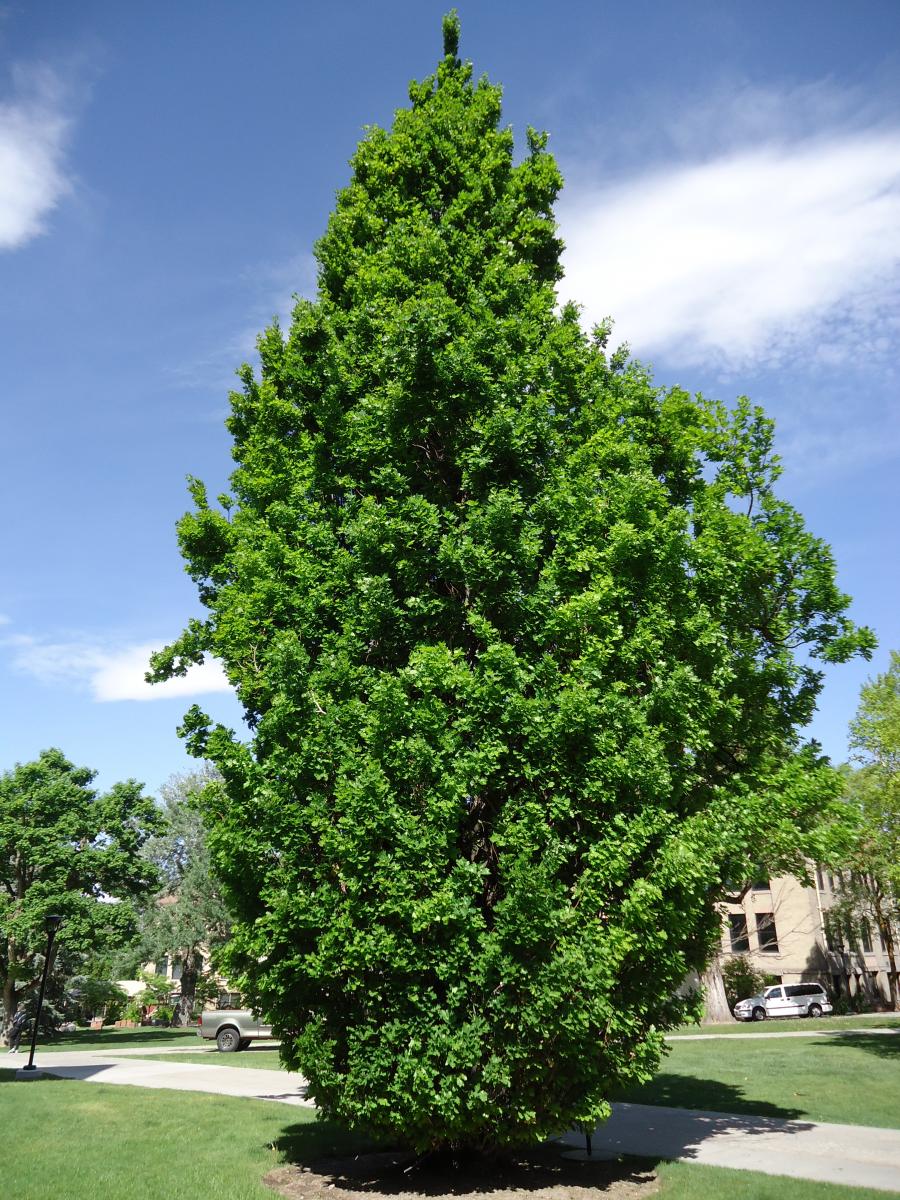
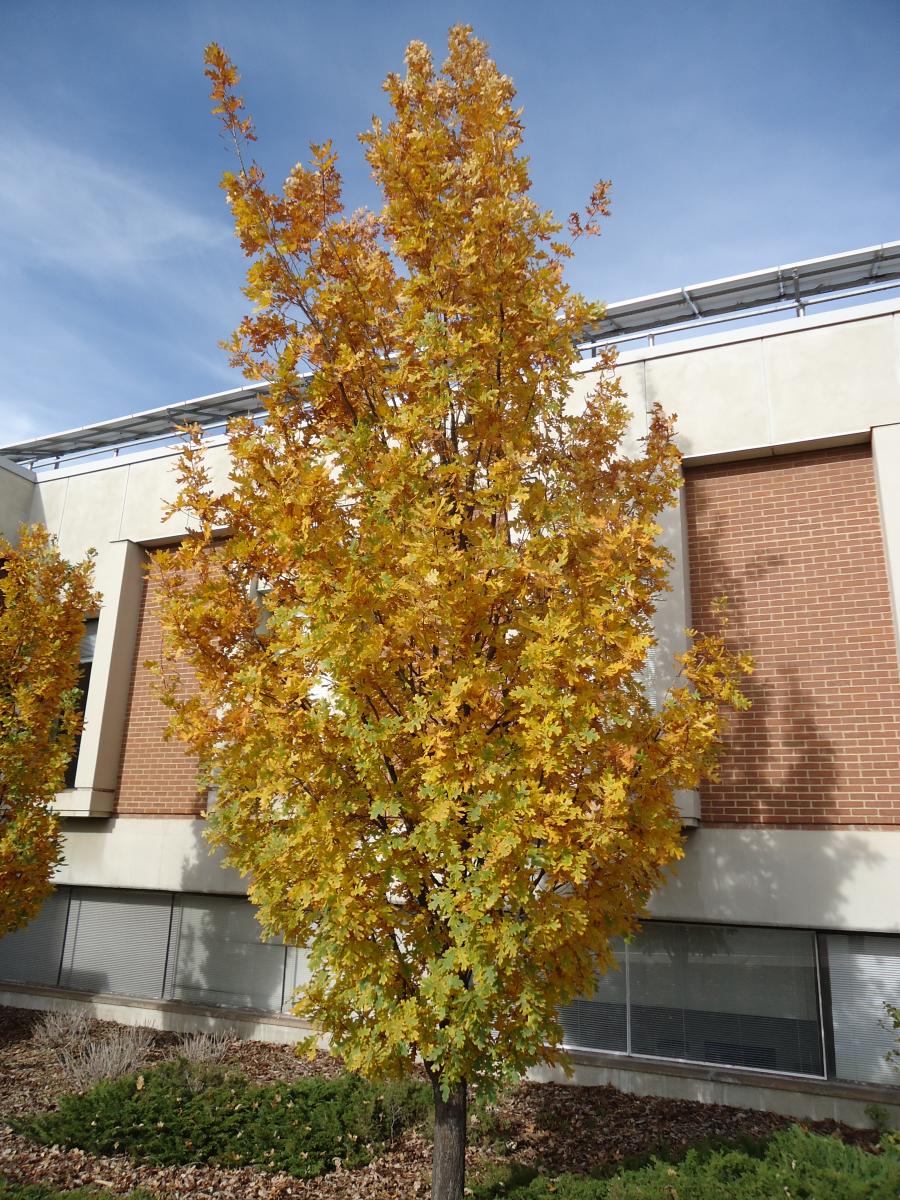

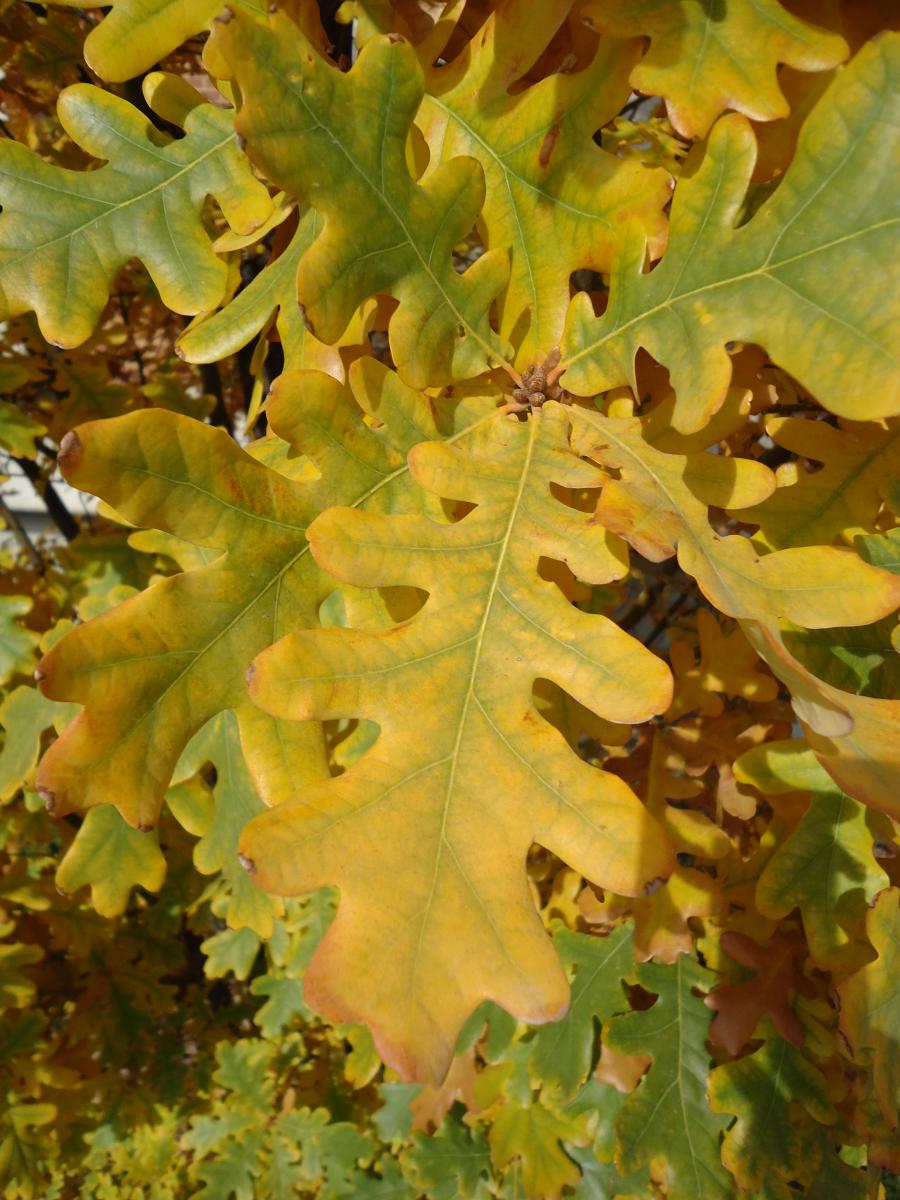

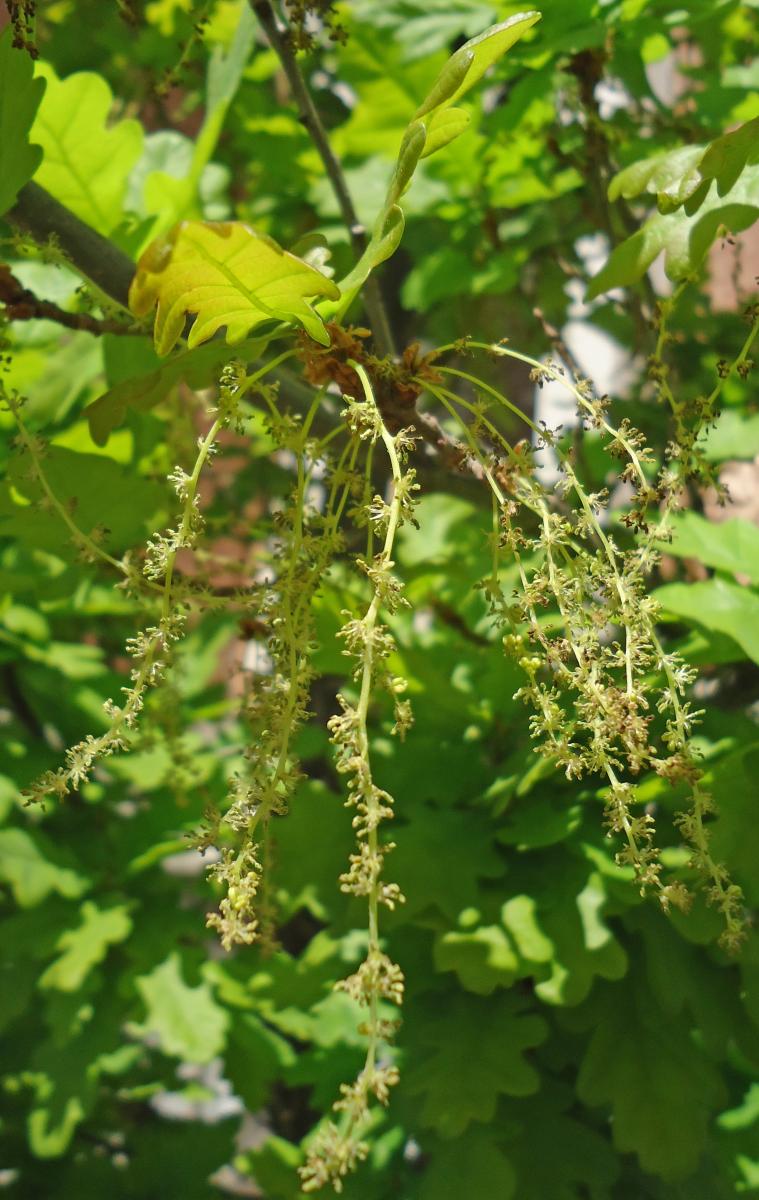
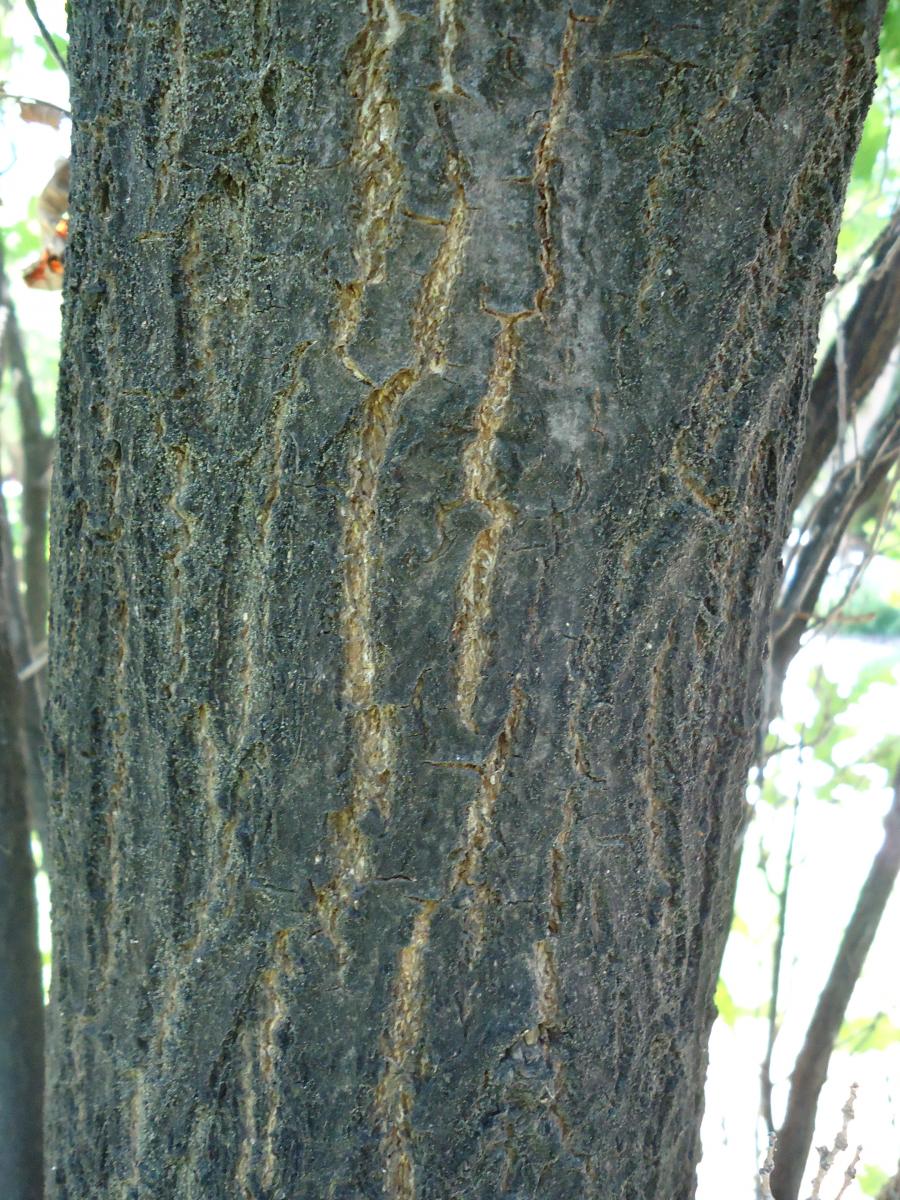
Quercus robur var. 'Fastigiata'
Leaves: Deciduous. 2½ to 5 inch long and 1 to 2½ inch wide. Widest in the middle or towards the end. 3 to 7 pairs of rounded lobes. The lobes at leaf base are ear-lobe like. Medium to dark green color. Fall leaves are brown and often persist throughout the winter.
Bark/Twigs: Deeply furrowed, grayish black bark. Younger branches have smooth bark. Branches twist and spiral as they grow upwards.
Flowers/Fruit: Inconspicuous, yellow-brown to green-brown flowers form in long, thin hanging clusters or catkins during spring, as the leaves are emerging. Acorns are shiny brown and narrow, about 1 to 1½ inches long. The acorn's cap is smooth and covers ½ to a ⅓ of the nut. Acorns grow singly or in groups of up to 4.
Mature size and shape: Large. 50 to 60 feet high x 10 to 15 feet wide. Distinctly upright columnar shape. Maintains an impressively narrow columnar shape.
General information/special features: Plant in full sun. Moist, well-drained soil is best. Adapts to a variety of conditions as long as it is not in wet soil. This is the ancient oak species of England, its oldest specimens once venerated by the Druids as oracles. The Jamestown colonists in 1607 and Mayflower Pilgrims of 1620 both traveled to the New World in ships made of English oak.
Landscape use and maintenance: Good tree choice for narrow areas. Creates an elegant formal look when lining walks or paths. Unusual tree that attracts a lot of attention. Functions well as a screen or windbreak. Slow growing rate. Average maintenance.
USDA Hardiness Zone: 5 to 8
Family/Origin: Fagaceae - Beech and Oak. Native to Europe, North Africa and parts of western Asia. The upright form was first discovered growing wild in a forest in Germany and was propagated by grafting in 1783.
Campus Use: Common. Can be found along west side of INSCC (Bld 19) or southeast of Languages and Communication (Bld 49).
